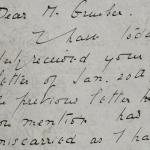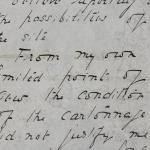1913-14 Abydos
The season was devoted to excavating the cemeteries including a small mastaba cemetery of the 4th Dynasty and a mound which had startigraphy from every era of Egyptian history from predynastic kilns for tempering wheat on the lowest level to a Coptic house. The mastaba cemetery was undisturbed and the burials did not have a lot of objects. The 12th Dynasty shaft tombs contained wooded coffins and a variety of grave goods including jewellery with semi-precious stones, alabaster vases, and a limeston figure of a girl acrobat. The 18th Dynasty shaft tombs had been looted in antiquity but but still contained objects like stone vases, small gold ornaments, scarbs, game pieces, jewellry, bronze statuettes and pottery.
An ibis cemetery locarted at the edge of the cultivated land towards the Royal Tombs was also excavated. which was comprised of 93 jars of baked and unbaked mud mostly containing the remains of ibises but also other animal mummies and the bones of other species. Thomas Whittemore opened about 150 jars that has been found in this and the previous season and recorded 2500 specimens.
Archive Documents
A small bronze lamp and a large leaden storage vessel was kept by Cairo.
Loat, W. Leonard S. 1914. Ibis Cemetery at Abydos. The Journal of Egyptian Archaeology 1.1, 40.
Naville, Edouard 1914. Excavations at Abydos: the great pool and the tomb of Osiris. Journal of Egyptian Archaeology 1 (3), 159-167.
Peet, T. Eric 1914. The year's work at Abydos. Journal of Egyptian Archaeology 1 (1), 37-39.
Whittemore, Thomas 1914."The ibis cemetery at Abydos: 1914", The Journal of Egyptian Archaeology, Vol. 1, No. 4, 248-249.
Frankfort 1933. info taken from monograph






